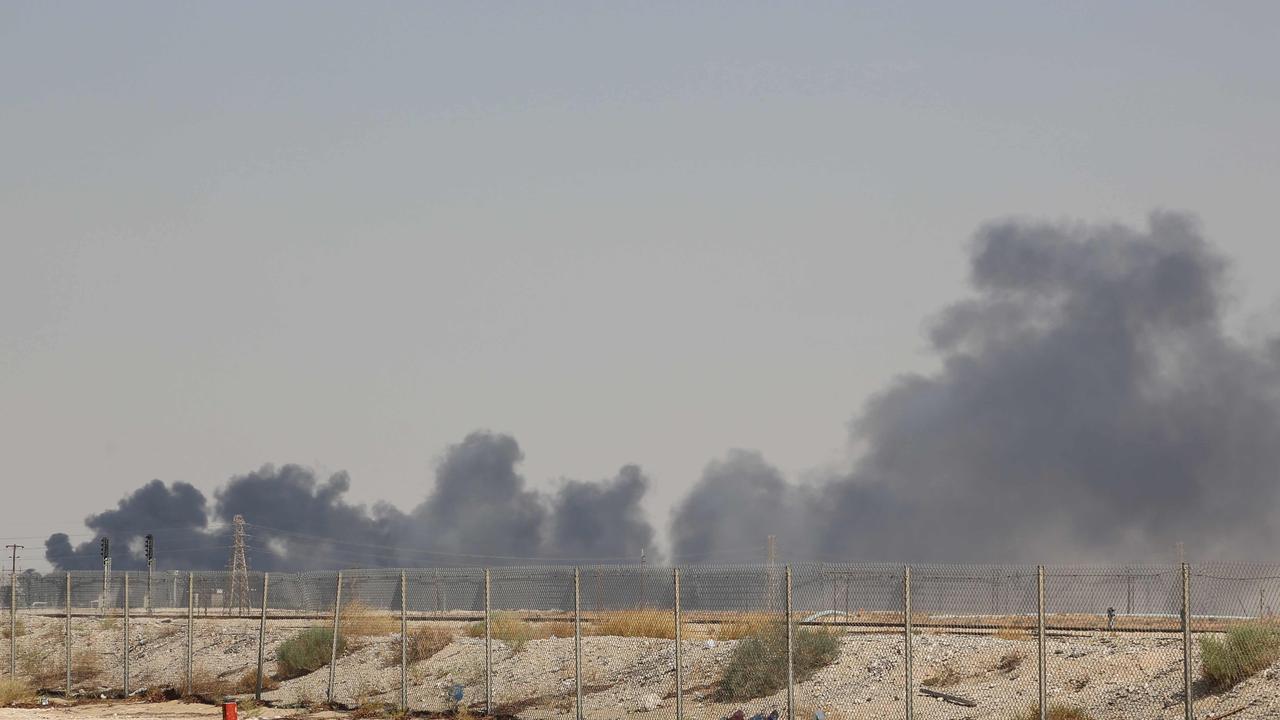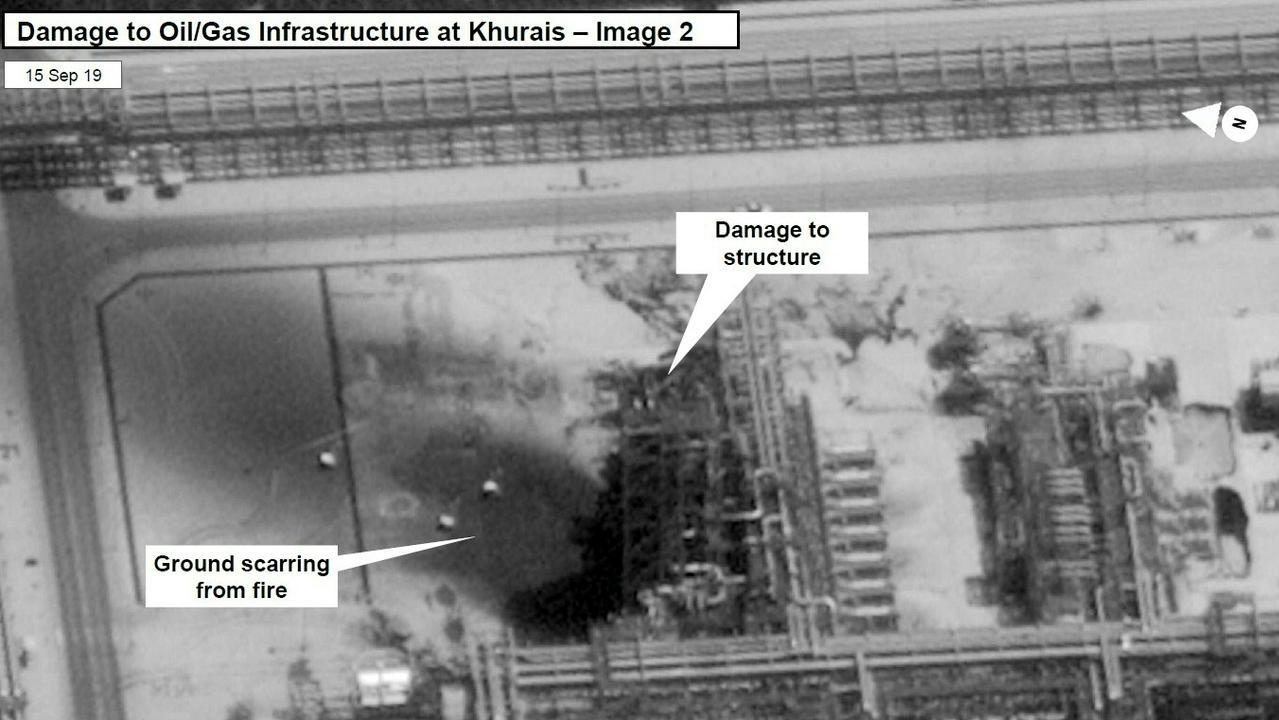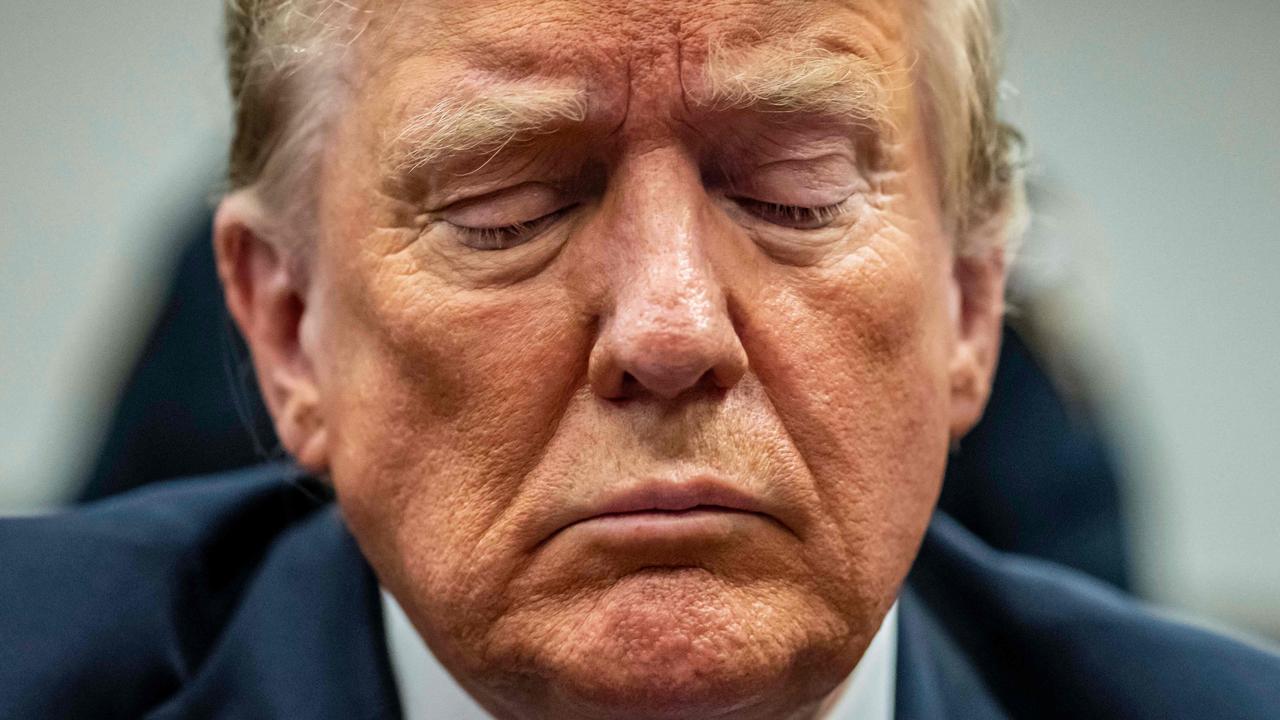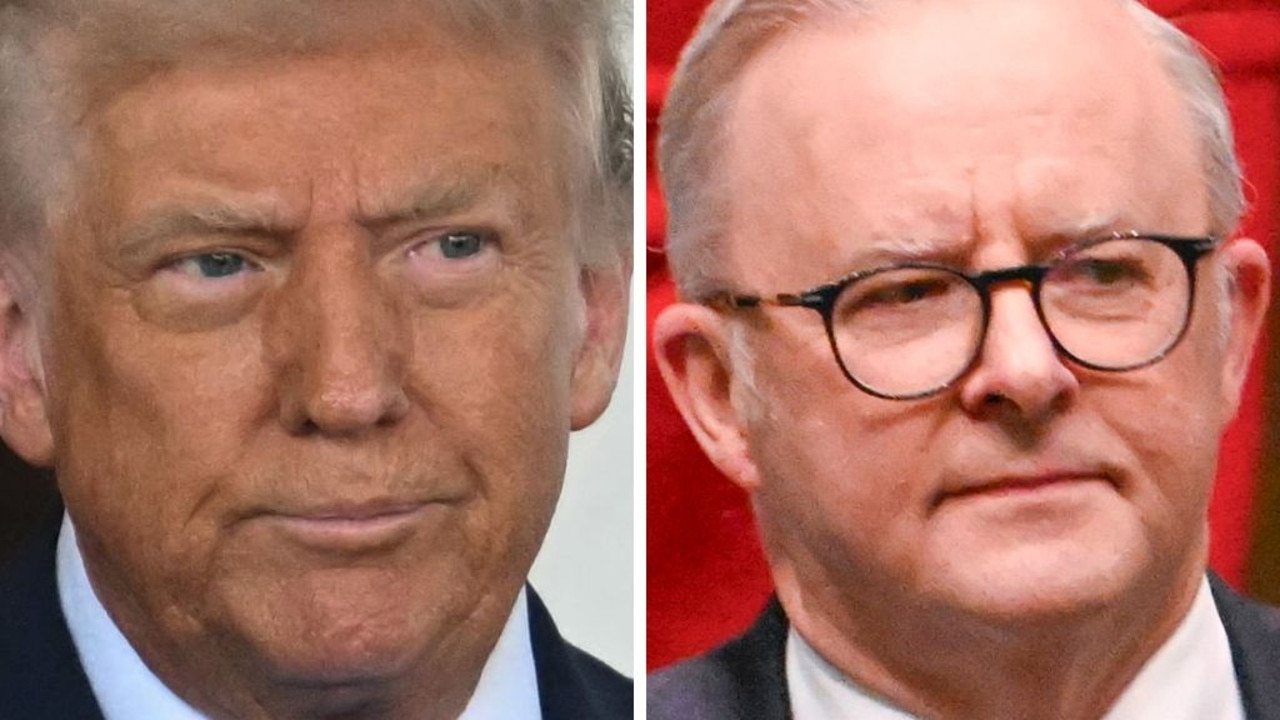Military options on the table as US prepares response to Saudi oil attack
Donald Trump faces growing pressure to launch military action on Iran. But the timing of his next move could prove disastrous for everybody.

Donald Trump is facing growing pressure to strike Iran.
With speculation mounting over the Iranian Government’s involvement in the weekend Saudi drone attack, Republicans within the US President’s administration are urging him to act now and strike with force.
We call on all nations to publicly and unequivocally condemn Iran’s attacks. The United States will work with our partners and allies to ensure that energy markets remain well supplied and Iran is held accountable for its aggression
— Secretary Pompeo (@SecPompeo) September 14, 2019
It is now time for the U.S. to put on the table an attack on Iranian oil refineries if they continue their provocations or increase nuclear enrichment.
— Lindsey Graham (@LindseyGrahamSC) September 14, 2019
Experts say it’s highly likely Mr Trump will respond with a show of force if conclusive evidence shows Iran was behind the Saturday attack.
But the worst mistake he could make would be to strike without solid proof.
Malcolm Davis, a senior analyst at the Australian Strategic Policy Institute, said the worst thing Mr Trump could do would be to take the US into a warlike situation before hard evidence was produced. “I think if Trump is smart he will try and get that hard evidence,” he told news.com.au. “The last thing you would want is a ‘weapons of mass destruction in Iraq’ situation. You need a solid case.”
But he also stressed the Saturday drone attack was not to be trivialised.
The drone attack on Saudi Arabia was the most damaging blow on the Middle Eastern kingdom in more than four years of civil war in Yemen.
It helped drive world oil prices up by 10 per cent in what could cause a nightmare situation for Australia.
Abqaiq is the world’s biggest crude-stabilisation facility, refining some seven million barrels a day. Khurais produces about 1.5 million barrels of crude a day. Both facilities were hit in the Saturday attack.
Overnight, Saudi Arabia has ramped up its rhetoric towards Iran, which continues to deny responsibility for the attacks.
The President, who has supported Saudi Arabia’s leaders in their war against Iranian-backed Houthi forces in Yemen, has renewed his military threats against Iran numerous times in response, saying the US was “locked and loaded”.
This morning he levelled a more accusatory tweet against Iran, referencing a missile strike on a US surveillance drone over the Strait of Hormuz earlier this year:
Remember when Iran shot down a drone, saying knowingly that it was in their “airspace†when, in fact, it was nowhere close. They stuck strongly to that story knowing that it was a very big lie. Now they say that they had nothing to do with the attack on Saudi Arabia. We’ll see?
— Donald J. Trump (@realDonaldTrump) September 16, 2019
Mr Trump has since told reporters he thinks Iran was the likely culprit, but he wants to be sure and hopes to avoid war.
He said the US would be talking to Saudi Arabia, the United Arab Emirates and “many of the neighbours out there that we’re very close friends with”.
“It was a very large attack and it could be met with an attack many, many times larger, very easily by our country,” he said.
‘AMERICA’S REPUTATION IS ON THE LINE’
If conclusive evidence proves Tehran was behind the attack — which Dr Davis suspects it was — it’s “highly likely” the US will take direct action.
“This was a serious escalation of the conflict. They attacked not just Saudi oil but the world’s oil, and if you look at the last few months, it’s the Iranians that are doing all the provocations here,” he said. “I think US credibility would be on the line if they didn’t respond. As their opening gambit they could use air and missile strikes to attack Iranian nuclear facilities.
“The Iranians are now steadily breaking out from the constraints of the JCPOA and building up material for a nuclear weapon. America sees this as an opportunity to strike and prevent this from happening.”

Some commentators have questioned whether it’s in America’s best interest to launch an attack on Iran.
Paul Miller from the Atlantic Council suggested leadership in this case may be “letting the Saudis do their own dirty work, learning to provide their own security, and seeing the cost of their own poor choices”.
He noted Saudi Arabia was not an ally of the US and has no defence treaty with them.
“Does that mean we can ignore the region while Saudi and Iran inch closer to war? Of course not. A war in the Middle East between the region’s two largest powers for hegemony would be both big and bad,” said Mr Miller.
“But there are no good guys here. Iran sponsors terrorism, exports insurgency, and proliferates WMD. Saudi is a totalitarian quasi-theocracy whose political and religious culture were the enabling milieu for Al-Qaeda’s origins and recruitment. And that was before Khashoggi.”
But Dr Davis says it’s unlikely the US will just sit back and let the Saudis sort it out for themselves.
“I think if the US does nothing, that would completely undermine US capability in the eyes of the region. This is not an isolated event. This is a deliberate escalation against Saudi Arabia.”
He said the US would either strike Iran themselves to demonstrate their resolve or assist Saudi Arabia to carry out strikes.
And yes, this could involve Australia.
“I don’t see us cancelling our deployment into the Middle East because of this, and I think it’s important for us to stand shoulder-to-shoulder with the US, particularly if the Americans are going into harm’s way because of a country like Iran,” said Dr Davis.

He stressed that before anything happened, the nature of the attack needed to be determined. “Was it missiles? Was it drones? It needs to be emphasised that this was hardcore weaponry, not commercial drones. These are military spec drones with a significant range and explosive capability in terms of payload,” said Dr Davis.
Last night, Mr Trump issued a military threat to Iran, warning that the US was “locked and loaded” to respond if the culprit was proved.
But this should ultimately be taken with a grain of salt. “He threatened an implicit nuclear strike with Kim Jong-un, and then he became the first President to go to North Korea and attempt to strike a deal with them,” said Dr Davis. “We have a President who I don’t think really understands what he’s doing. He’s going by instinct. Is ‘locked and loaded’ just bluster or is it deadly serious? It’s hard to tell.”
SATELLITES POINT TO IRANIAN INVOLVEMENT
The US has released satellite images and cited intelligence assessments supporting its accusation that Iran was behind the attacks on crucial Saudi Arabian oil facilities over the weekend.
The Trump administration released satellite photographs of what officials said were at least 17 points of impact at various Saudi energy facilities, including damage at the heart of the kingdom’s crucial oil processing plant at Abqaiq.
It said the strikes came from the north or northwest, suggesting the attack came from the direction of Iran rather than Yemen, where the Iranian-backed Houthi militia had claimed responsibility for the attack.
The satellite images show the scale of destruction at the vital oil facilities.
The red boxes indicate the areas hit in the suspected drone attack, which the US believes involved 17 individual strikes:

Another image shows the Khurais oilfield, which is 98 kilometres west of the Abqaiq facility:

The image below shows a zoomed-in view of one of the two damaged buildings. Scorch marks from the fire appear to be visible alongside the damaged building:

Oil prices have risen to six-month highs in the wake of the attacks, with gains as high as 20 per cent.
Brent crude oil, the international benchmark, went up $12 a barrel to reach up to $71.95 a barrel before dropping down to $68.
Economists at London-based Capital Economics have warned a “full-blown US-Iran conflict” could cause oil to soar to $US150 a barrel this year.
However, they would expect the oil price to drop to $US80 per barrel by next year and $US60 by 2021.



